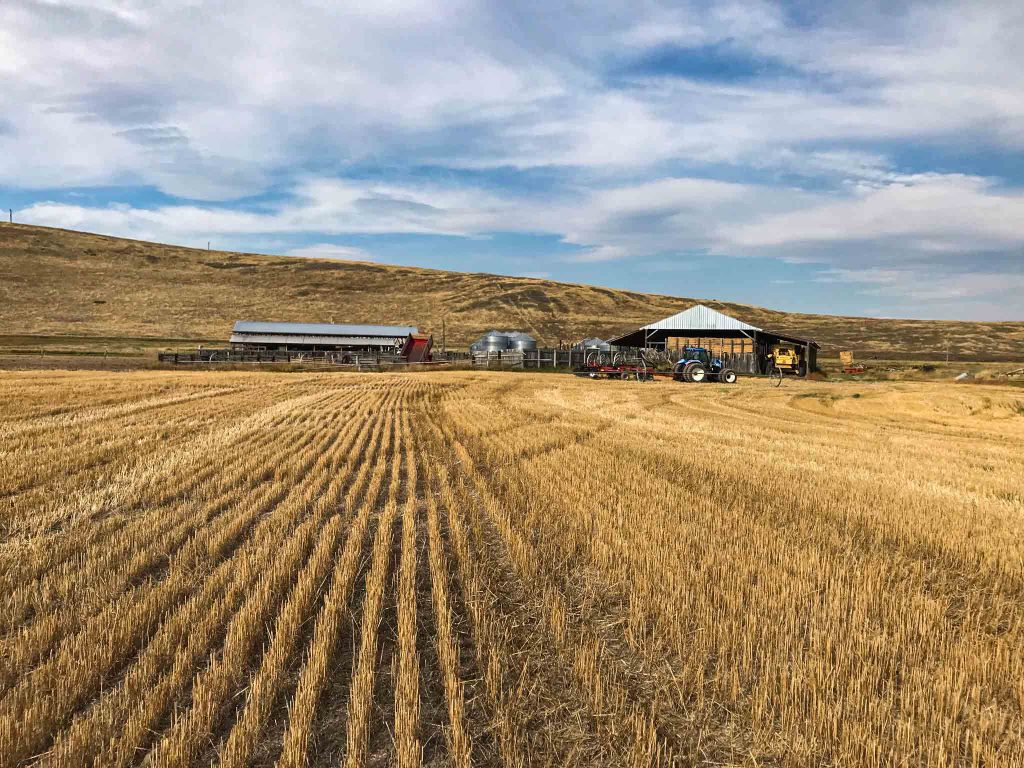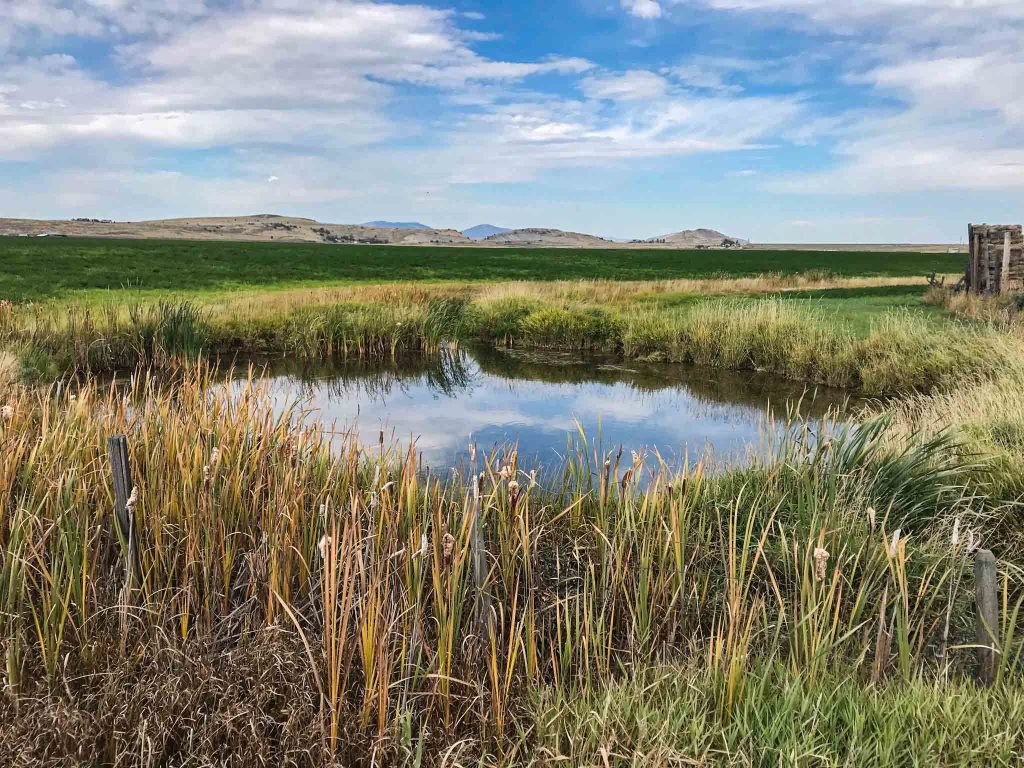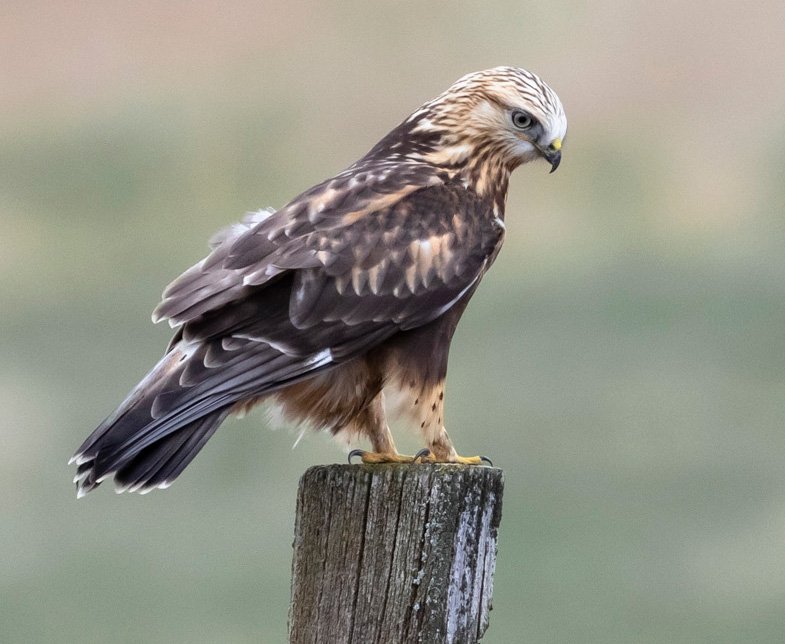Hunsucker Easement
“We wanted to Keep Our Family Farm in Agriculture”

For over 50 years, a Mission Valley family has been farming south of Polson. The 315-acre family farm contains rich lakebed sediments at the base of the Valley View Hills with a backdrop of the rugged Mission Mountains. It is just south of Pablo Reservoir which provides water for irrigation that is critical for agriculture on the property. For two generations the family has been farming the productive land – first raising cattle and now growing wheat and hay.
Even though the third generation has decided not to take over the family farm and instead elected to go into non-agriculture related careers, the family wanted to see their productive land stay in agriculture. They decided the best way to do this was with a purchased conservation easement through the Natural Resource Conservation Service Agricultural Land Easement program. The program provides federal funding through the Farm Bill to help keep productive farmland in agriculture throughout the United States. The family was able to obtain cash for the conservation easement from this program. They will continue to own and farm their land but can use the cash received in their farming operation or for retirement.
Photo above: Agricultural operations on the Hunsucker conservation easement
The conservation easement on the family farm not only will keep rich farmland available for agriculture, but it also ensures that farming will continue to be an important part of the Mission Valley’s character and economy.
The easement also benefits birds and wildlife. The property’s habitat value is enhanced by the adjacent 1,849-acre ranch protected with a conservation easement, held by Montana Land Reliance, and nearby Pablo National Wildlife Refuge. From spring through fall, the cultivated fields and wet areas associated with the irrigation system and ephemeral waterways provide favorable bird habitat. The family regularly observes trumpeter swan, Canada goose, great blue heron, a variety of ducks, as well as birds of prey, including bald eagle, prairie falcon, hawks and short-eared owl. While many of these species also use the nearby Pablo Reservoir, the waterways, wetlands and cultivated fields on the property provide additional habitat for a diverse array of birds. Over one hundred bird species have been observed in the vicinity.

Photo above: Wetland on the Hunsucker Conservation Easement

A group of 50 to 75 sandhill cranes regularly uses the parcel, as well as species of concern such as bobolink and long-billed curlew. It is also nested within key winter habitat for birds of prey. “The Mission Valley is one of the best wintering areas for birds of prey in all of the United States,” said Denver Holt, world-renowned owl expert and founder of the 30-year-old nonprofit Owl Research Institute in Charlo. The 315-acre family farm south of Pablo Reservoir is located within one of the largest concentrations of wintering rough-legged hawks in the country. These birds come to eat mice and voles that are abundant here. There are also many bald eagles, red-tailed hawks, and other birds of prey that winter in the region. “The use of the conserved 315-acre family farm and the surrounding area by birds of prey in winter is incredible,” says Laura Katzman of Flathead Land Trust. “What began as helping a Mission Valley family keep their family farm in agriculture turned out to be so much more. It is also helping conserve a key area important to the survival of iconic and majestic birds of prey.”
Photo above: Rough legged hawk, by Dick Walker
